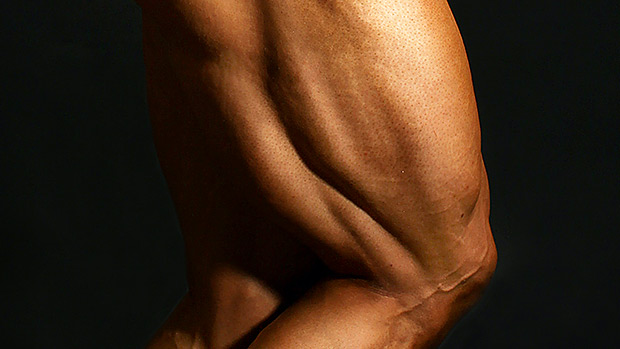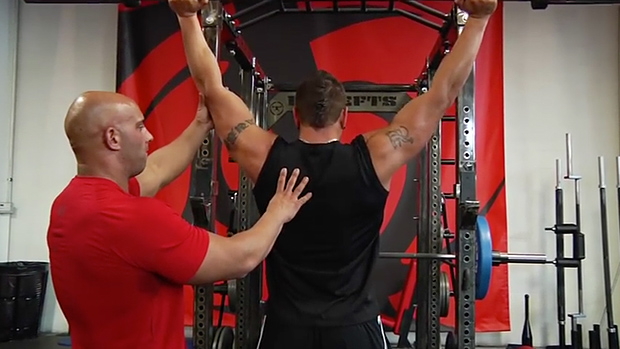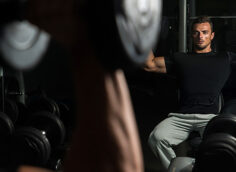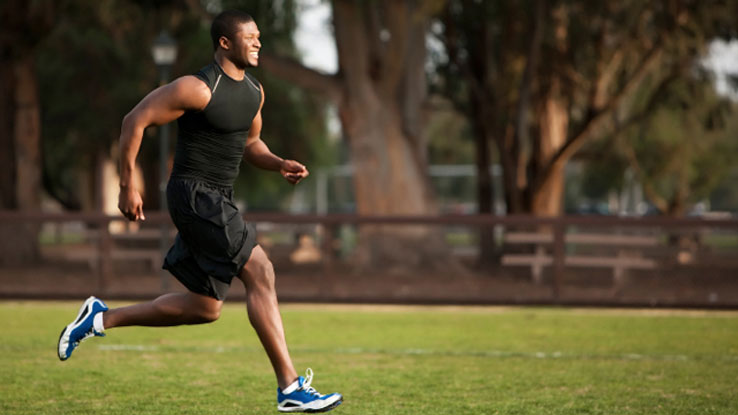You have plenty of options when it comes to isolating your hamstrings. But chances are, your first choice is to hop on the lying or seated leg curl machine. But these can get boring. Plus, there are some exercises that might work better for you.
The dumbbell hamstring curl is a highly underrated exercise. It's a little awkward at first, but if you set yourself up correctly it'll become your new favorite hamstrings exercise.
Dumbbell Hamstring Curl
How to Do It
- Use a decline bench: Anywhere from a 10 to 30 degree decline will help keep your hamstrings under tension through the greatest range of motion.
- Consider mechanics: Due to gravity and leverage factors, the dumbbell load is greatest towards the bottom position. As you raise the dumbbell to the top, the moment arm shortens and the weight feels lighter. With a flat bench you'll feel a quicker loss in muscle tension as you raise your heels up. But with a decline bench, the moment arm is a little longer when you reach the top, making it a better exercise.
- Lock yourself in to the bench: Some benches will have a footrest you can grab; others will have a seat you can hang on to. Set yourself up tight so your hamstrings become the main focus.
- Use a foam roller: Even a rolled up towel will work. Place it under your hips right in the crease. This will place your hips in a more flexed position, loading your hamstrings through a greater length in the bottom position. (You can use this trick for better results with a lying leg curl machine too!)
- Set the dumbbell: Have the dumbbell lying on its side, about two feet from the bottom of the bench. You're better off with it too far away (and having to pull yourself up the bench) than too close. If it's too close, you'll awkwardly flop about trying to grab it.
- Point your toes: Clamping the dumbbell correctly forces this to happen anyway. Plantar-flexing your ankle will activate the gastrocnemius portion of your calf – you can clearly see mine in the video on the verge of cramping! This co-contraction causes an active insufficiency, forcing your hamstrings to do more of the work. Pointing your toes also helps to cue initiating a curl with your hamstrings rather than your gastrocnemius – a common fault that could be compromising your ham development.
- Don't come all the way up: Depending on your degree of decline, you'll find a point as you get to the top of the curl where your hamstrings lose tension. Avoid this unnecessary range of motion by limiting how high you raise the dumbbell. It may take a few reps to figure out your active range.
- Lower all of the way down: Due to the effects of gravity on the dumbbell, the point of maximal load is towards the bottom. Here you'll be loading your hamstrings in their mid to lengthened range. Set yourself up in the best position to extend your knees fully, but without completely locking them.
- Progressively overload: Increase dumbbell weight or reps over time.





